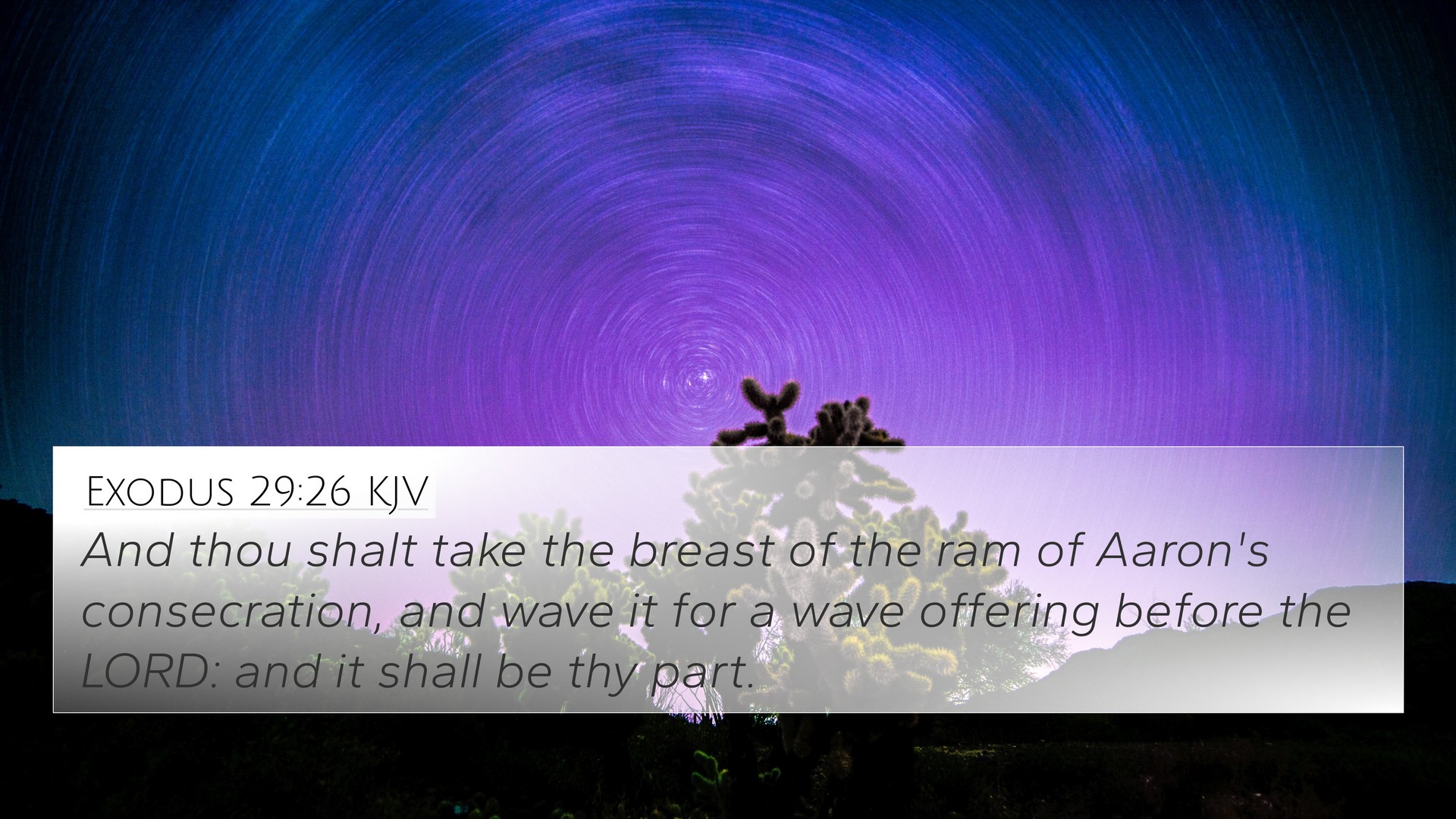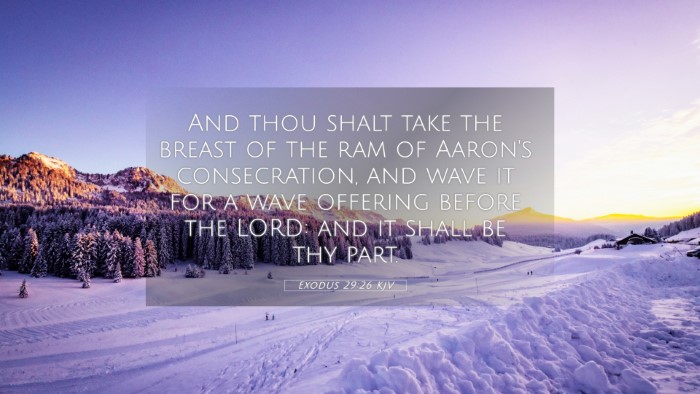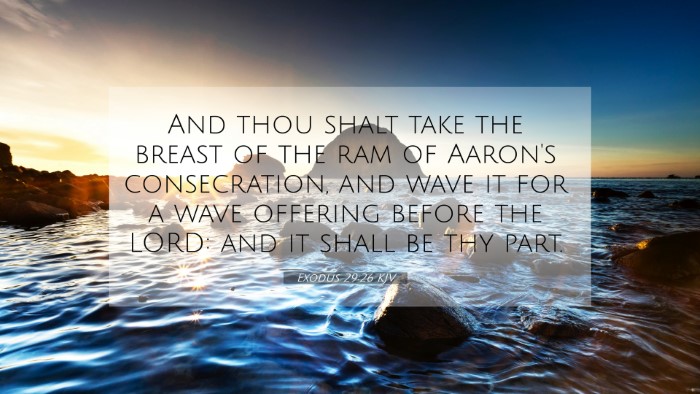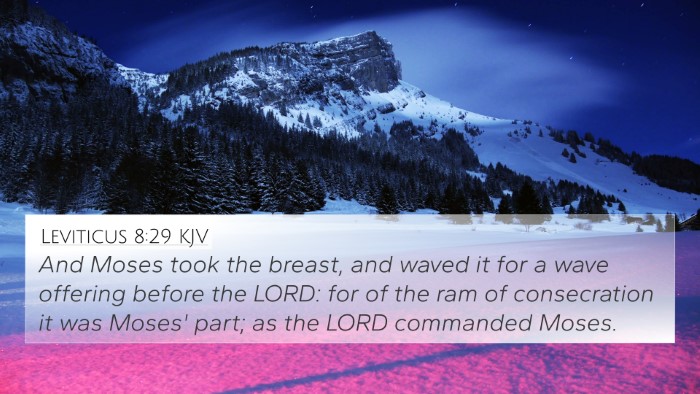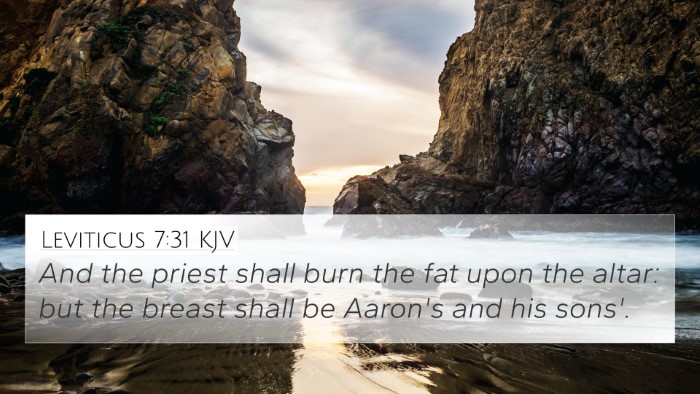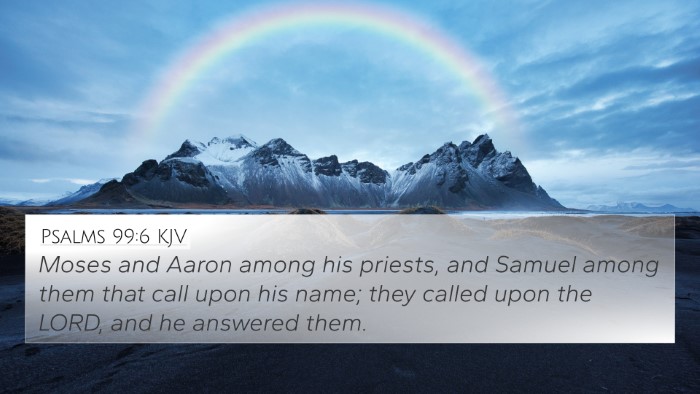Understanding Exodus 29:26
Exodus 29:26 states: “And thou shalt take the breast of the ram of Aaron's consecration, and wave it for a wave offering before the LORD: and it shall be thy part.”
Significance of Exodus 29:26
This verse encapsulates a key aspect of the consecration of Aaron and his sons as priests and highlights the ceremonial aspects of their ordination. The act of waving the breast of the ram signifies a presentation of the offering to God, indicating the importance of acknowledgment and acceptance of the priest's service.
Commentary Insights
The following insights combine perspectives from public domain commentaries:
- Matthew Henry's Commentary: Henry emphasizes the significance of the wave offering as both an act of devotion and a means of receiving divine approval. He notes that the wave offering symbolizes the priest's role in mediating between God and the people.
- Albert Barnes' Commentary: Barnes points out the cultural context of the wave offering, indicating that it was a common practice to dedicate parts of offerings to God. He discusses how this particular offering illustrates the sanctification of the priests, marking them as set apart for holy service.
- Adam Clarke's Commentary: Clarke elaborates on the symbolism of the breast in the wave offering, underscoring its representation of the love and care inherent in the priesthood. He discusses the role of the priests as shepherds to the people, reflecting God's sustenance and guidance.
Bible Verse Cross-References
To further understand Exodus 29:26, one can explore these important cross-references:
- Leviticus 7:30-31: Discusses the peace offerings and the role of the priest in their preparations.
- Exodus 28:1: Outlines God's instructions for the consecration of Aaron and his sons as priests.
- Hebrews 5:4-6: Refers to the calling of high priests and the importance of their sanctification.
- Leviticus 8:22-23: Provides further details on the consecration rituals for Aaron.
- 1 Peter 2:9: Connects the believer’s priesthood with the priestly role outlined in the Old Testament.
- Revelation 1:6: Highlights the belief that Jesus makes His followers a kingdom of priests.
- Romans 12:1: Encourages Christians to present themselves as living sacrifices, supporting the priestly theme of offering to God.
Thematic Connections and Cross-Referencing
Exodus 29:26 serves as a crucial point within a broader biblical narrative. The themes of consecration, mediation, and the priesthood are prevalent throughout scripture.
Connecting Bible Verses
Examining the connections between Bible verses enhances our understanding. Here are some connections:
- Exodus 29:26 connects well with Hebrews 10:11-14, which discusses the finality of Christ's sacrifice in contrast to the repeated offerings in the Old Testament.
- Romans 5:1-2 shows the peace believers now have through Jesus, paralleling the peace offerings commanded in the Old Testament.
- Matthew 26:28: Jesus’ offering of His blood at the Last Supper reemphasizes the sacrificial theme found in Exodus.
- 2 Corinthians 5:17: Speaks of being made new, connecting the priestly consecration as an inward transformation by God.
- Philippians 3:3: Refers to believers as the true circumcision who worship God in spirit, aligning with the themes of consecration.
Tools for Bible Cross-Referencing
Utilizing tools such as a Bible concordance or a Bible cross-reference guide can greatly aid in understanding connections between verses. Here are some ways to engage deeply with the text:
- Learn how to use a Bible cross-reference system for deeper study.
- Explore cross-reference Bible study methods to uncover thematic links.
- Consult comprehensive Bible cross-reference materials for an exhaustive study experience.
Conclusion
In conclusion, Exodus 29:26 provides rich ground for understanding the priestly role within both the Old and New Testaments. By studying this verse and its connections to others, one can appreciate the continuity of God's redemptive plan, highlighting the significance of Christ’s perfect sacrifice while embracing the calling of believers as a holy priesthood.
